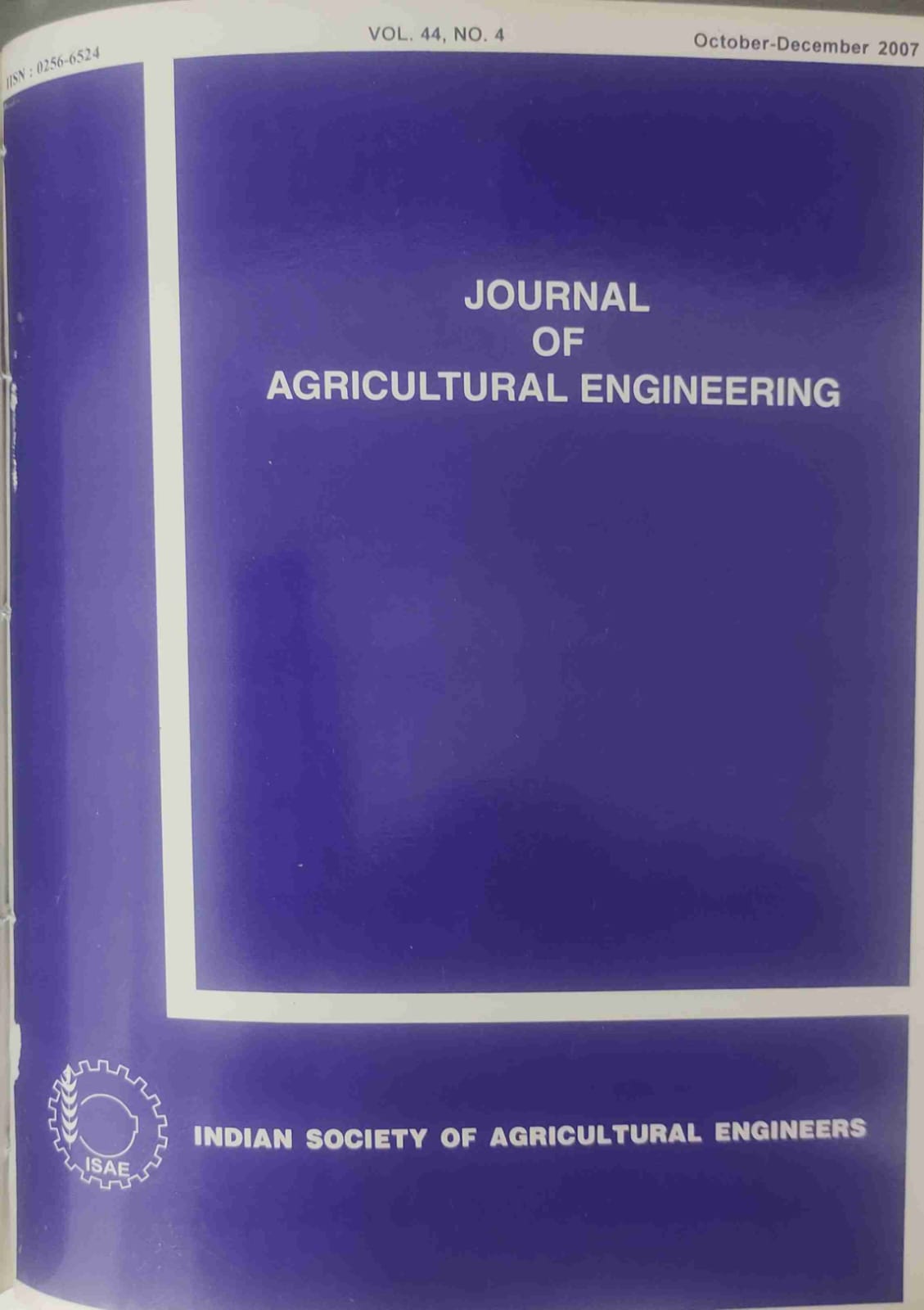Design of Bi-Level Drainage Systems: An Analytical Solution Using Inversion Theorem
DOI:
https://doi.org/10.52151/jae2007444.1296Abstract
The linearized Boussinesq equation was used to formulate a boundary value problem for a bi-level drainage system. The proposed solution had been validated by conducted desk exercises using existing solutions for conventional level and bi-level drainage systems. Field data reported in the literature were also used to validate the accuracy of the analytical solution. Simplified equations proposed in this paper were compared with the exact solutions to conclude that the underlying assumptions did not result in errors of undesirable magnitude. Thus, application of simplified equations for hi-level drainage design or for simulations of hydraulic heads is recommended. With the proposed solution, it should be possible to design a bi-level drainage system using a hand held calculator. Therefore, present investigation is a step ahead of the earlier paper by these authors
References
Bouwer H; van Schilfgaarde J. 1963. Simplified method of predicting fall of water table in drained land. Trans. ASAE, 6, 288-291, 296.
Carslaw H S; Jaeger J C. 1959. Conduction of Heat in Solids. Second ed., Oxford University, London. U.K. Chauhan H S; Schwab G 0; Hamdy M Y. 1968.
Analytical and computer solutions of the transient water tables for drainage of sloping lands. Water Resou. Res., 4, 573-579.
Chu S T; DeBoer D W. 1976. Field and laboratory evaluation of bi-level drainage theory. Trans. ASAE, 19, 478-481.
DeBoer D W; Chu S T. 1975. Bi-level subsurface drainage theory. Trans. ASAE, 18, 664-667.
Dumm L D. 1954. Drain spacing formula. Agric. Engg., 35, 726-730.
Dumm L D. 1960. Validity and use of the transient flow concepts in subsurface drainage. Trans. ASAE, 7, 142146,151.
Pandey R S; Bhattacharya A K; Singh 0 P; Gupta S K. 1992. Drawdown solutions with variable drainable porosity. J. Irri. Drain. Engg. Div. ASCE, 118(3), 382-396.
Rao K V G K; Sharma D P; Oosterbaan R J. 1992. Sub-irrigation by ground water management with controlled subsurface drainage in semi-arid areas. Int. Conf. Supplementary Irrigation. Drought Water Mgt, 3(S6),7.1-7.9.
Rao K V G K; Singh 0 P; Gupta R K; Kamra S K; Pandey R S; Kumbhare P S; Abrol I P. 1986. Drainage Investigations for Salinity Control in Haryana. Central Soil Salinity Research Institute, Kamal. Bull. No. 10: 95p. Sabti N A. 1989. Linear and nonlinear solution of the Boussinesq equation for the bi-level drainage problem. Agric. Water Mgt., 16, 269-278.
Terzidis G. 1968. Computational schemes for the Boussinesq equation. J. Irri. Drain. Engg., Div. ASCE, 94, 381-389.
van Schilfgaarde J. 1964. Design of tile drainage for falling water table. J. Irri. Drain. Engng., Div. ASCE, 90, 71-73.
Verma A K. 1997. Transient Solution of the Boussinesq Equation for Bi-level Drainage. M. Tech. Thesis. G. B. Pant University of Agriculture and Technology, Pantnagar.
Verma A K; Gupta S K; Singh K K; Chauhan H S. 1998. An analytical solution for design of bi-level drainage systems. Agric. Water Mgt., 37, 75-92.














